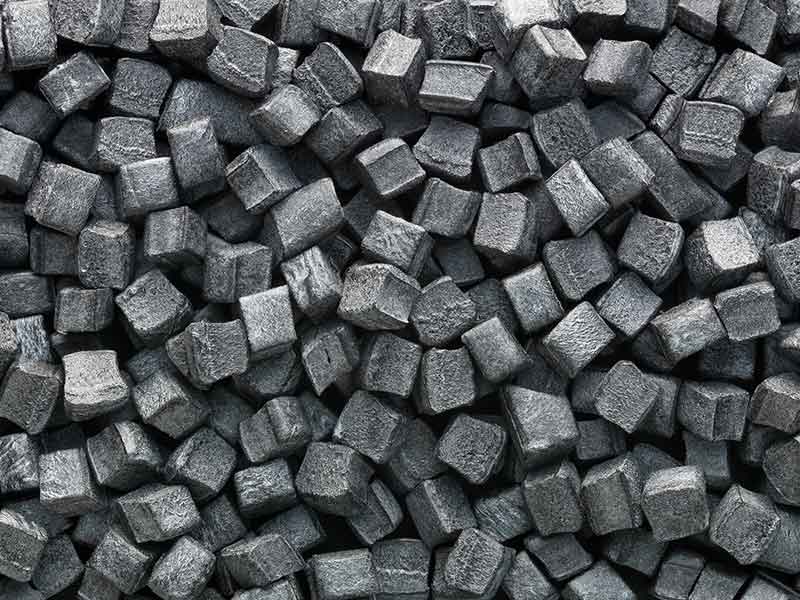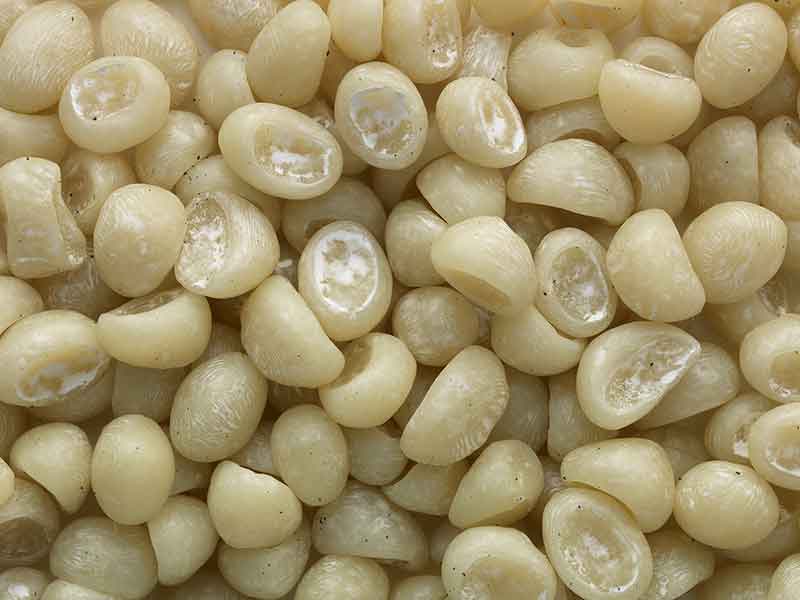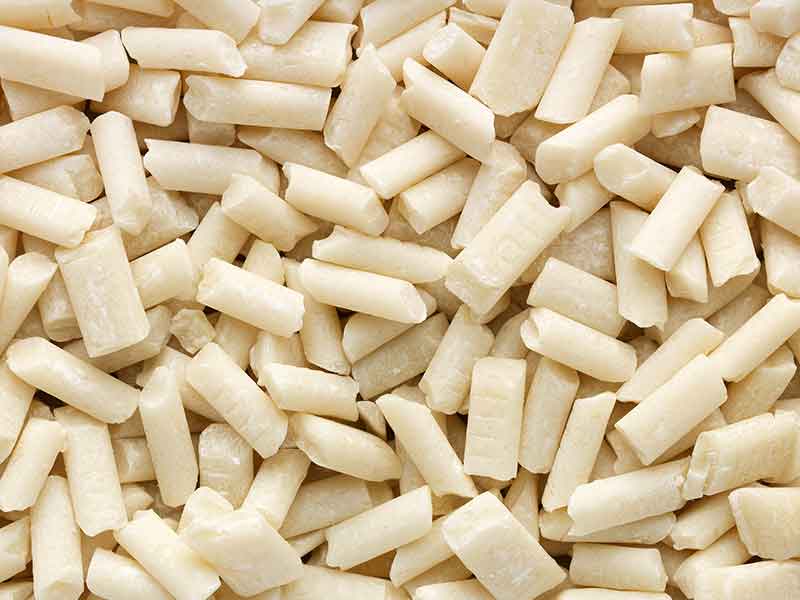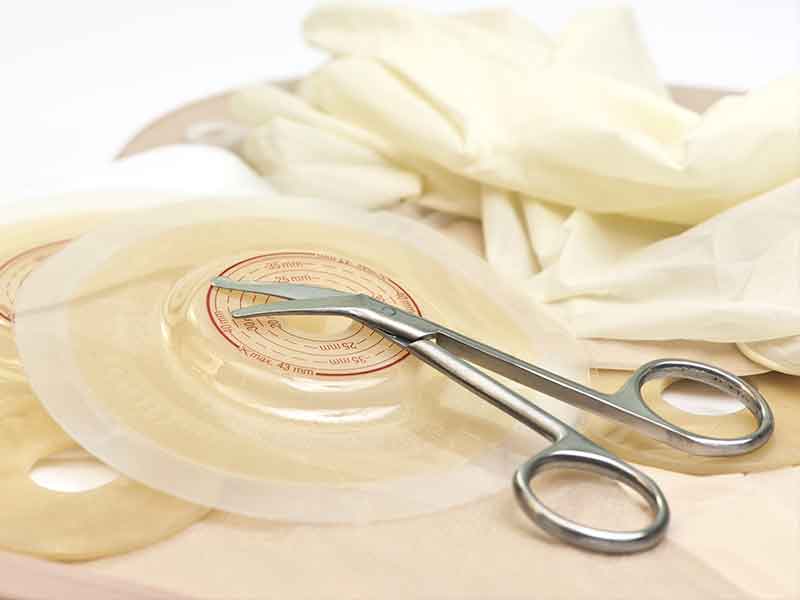The plastic polyisobutylene (PIB) belongs to the olefin polymer family. It has been manufactured industrially since the 1930s and is produced within a wide viscosity range from oil-like to raw rubber-like masses. Its mechanical properties here depend heavily on its average molar mass.
Its excellent electrical insulation property and electrical values, very good resistance against acids, alkalies and saline solutions as well as very low steam and gas permeability are its special features.
Typical areas of application
Corresponding applications can be derived from this property profile, in which PIB (polyisobutylene) is used as a determining formulation component: Thus, its corrosion resistance is used in container linings or pipe lagging.
For sealing functions as tracks or joints the usability is valued in a wide temperature field to very low temperatures (to -50°C).
The adjustable stickiness is used both for films/foils and also hot glue applications. For packaging, in particular also for use for food due to its gas impermeability.
Benefits
BUSS compounding systems offer the following specific benefits
Compounding requirements
PIB compounding
The wide range of possible applications and excellent combinability with other plastics result in challenging compounding tasks. Thus, the stickiness or also the cold flow property of the PIB (polyisobutylene) can already present a challenge when dosing and feeding to the compounding system. With sophisticated processes these high demands are taken up and implemented.
When compared with alternative systems, the BUSS Co-Kneader can take advantage of its specific strengths very well: the moderate and adjustable shear rates dissipate the met energy highly efficiently and a wide viscosity field is mastered problem-free. In the mixing zones, the enormous number of mixing cycles means that even the highest contents of aggregates such as carbon black or graphite can be controlled very well.
With the BUSS Co-Kneader's two-stage system, compounding and the pressure build-up step are strictly decoupled. This enables the optimisation of the process steps independent of each other.
For PIB compounds, the appropriate pressure build-up device is selected depending on the application. Gear pumps, for example, can be used for direct film/foil processing or a flange-mounted extruder for pelletizing highly viscous and/or filled formulations.
The hinged BUSS Co-Kneader housing enables fast access and high system availability. The modular and therefore adjustable structure of the entire line and the widely supported BUSS process expertise make the BUSS Co-Kneader an excellent choice for compounding technical PIB in all of its diverse applications.
Typical plant layout
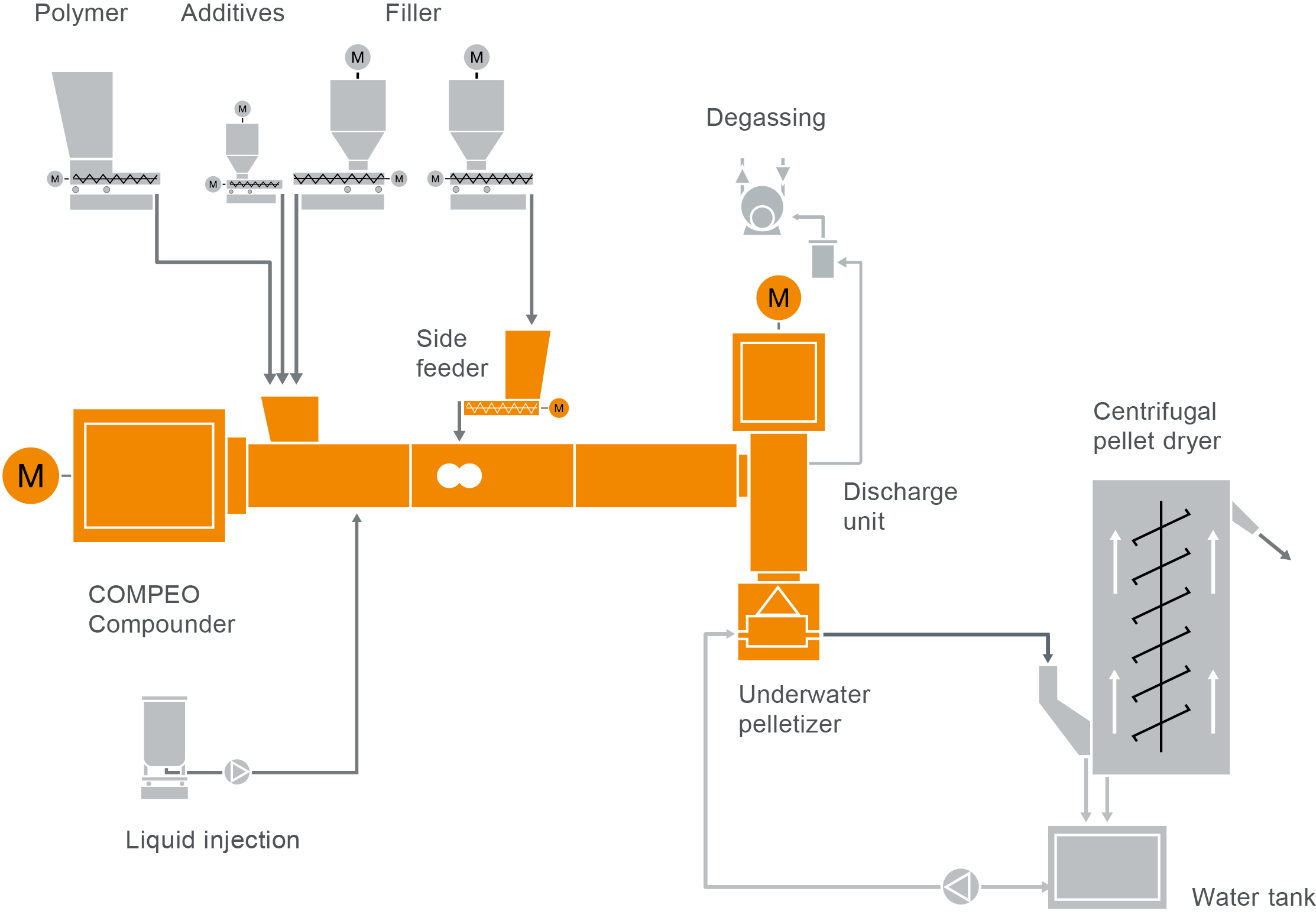
COMPEO compounder for PIB manufacturing
Take a look at our typical plant layout for the production of polyisobutylene compounds in our COMPEO showroom.

